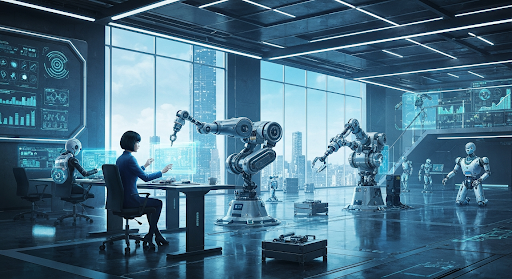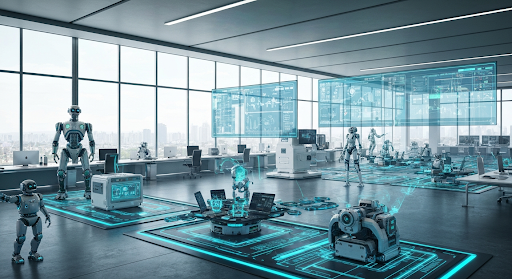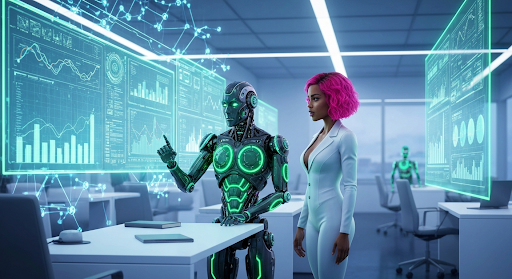Robots Automation: Streamlining Your Business Processes
Key Highlights
- Robots automation and business process automation are changing the way that companies handle both simple and complex tasks.
- Robotic process automation (RPA) lets you use software robots to make business process workflows simple and also helps in cutting down human error in many fields.
- Intelligent automation brings together artificial intelligence, machine learning, and cognitive automation to make business process operations smarter.
- The use of robots, including industrial robots and collaborative robots, helps all of us boost work speed, make tasks more flexible, and raise productivity.
- Automation software gives teams ways to grow with digital transformation and can work with both old and new business systems.
- Real-life cases now show us how automation and RPA implementations give big results in different areas, from making products to offering different services.
Introduction
Using robots and automation is not just something extra anymore—it is now a must-have for companies that want to keep up with digital transformation. When you use process automation, your business can do more repetitive tasks in less time and with better accuracy. It helps make your internal processes smoother. This also lets your human resources focus on more important work rather than spending time on tasks that repeat. Are you thinking about how these new technologies could help modernize what you do? Let’s look at the ways robotics and automation can change your operations and bring new chances to your business in the fast-moving world today.
Understanding Robotics and Automation in Business
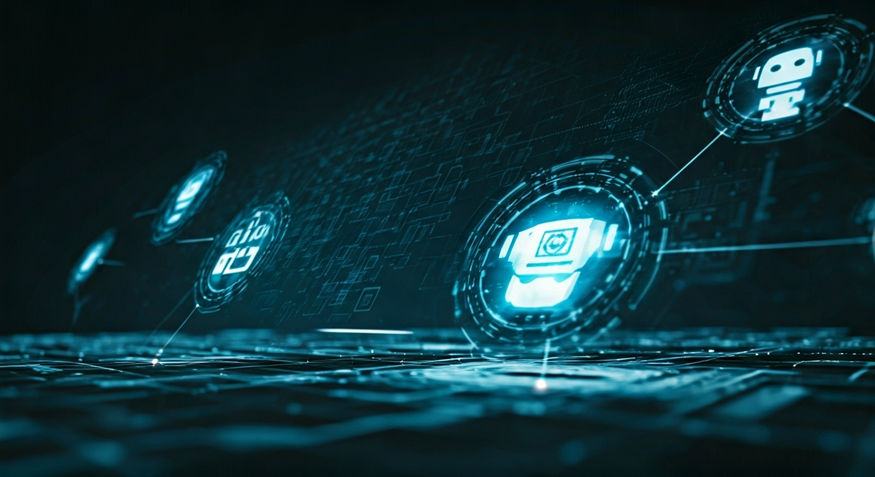
The world of business process improvement uses robotics and automation a lot. But what do these things mean for your company? Robotics is about making programmable machines, or robots, that can do physical or digital jobs. These robots can work alone or sometimes need some human intervention. Automation is a bit wider. It covers any type of technology, not just robots. Automation works to make tasks faster and easier, using either software or machines.
Both robotics and automation help make your business process run better. They help cut down on human error and increase how much work gets done. But to get the most out of these tools, you have to know how they are different from each other, and also how they work together in a business.
Defining Robotics vs. Automation
Robotics and automation often go together, but they are not the same thing. Robotics is all about machines—robots—that do tasks like putting products together or sorting things in a warehouse. These programmable machines use engineering, computer science, and sometimes artificial intelligence. Evan Beard says, “Robotics is about creating machines that act and sometimes make choices on their own.”
Automation, on the other hand, is a bigger idea. It includes all kinds of technology that help people do their tasks more easily and quickly. This can be done with physical robots, software robots, or other tools. For example, you can use a program to organize data, run machines in a factory, or handle messages using digital tools.
In the workplace, robotics is usually used for physical jobs such as assembly lines. Automation can be used for both physical jobs, like robots, and virtual jobs, like things done with software robots. The main difference is the focus. Robotics is about the robot and what it can do. Automation is about making any process happen with little or no human intervention.
Key Differences and Industry Applications
Understanding the distinctions between process automation, software robots, and business process automation helps you select the right solutions for your needs. In manufacturing, industrial automation replaces manual labor with machinery, while in offices, software robots handle digital processes. Human workers are freed from repetitive tasks but remain essential for oversight and complex decisions.
Here’s a quick look at their differences and uses:
| Feature/Aspect | Robotics | Automation |
|---|---|---|
| Focus | Programmable machines (physical robots) | Both hardware and software solutions |
| Typical Use | Industrial automation, manufacturing lines | Data entry, business process automation |
| Human Involvement | Sometimes needed for programming/oversight | Minimal for repetitive tasks |
| Application Areas | Production, logistics, warehousing | Finance, HR, IT, customer service |
With the distinctions clear, let’s explore how advanced technologies have evolved in this field.
The Evolution of Robots and Automation Technologies
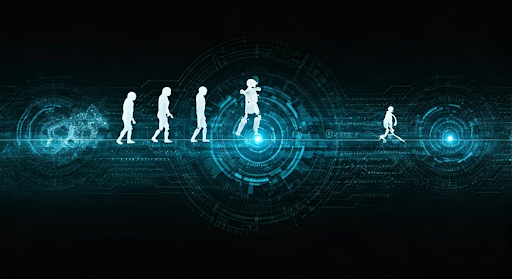
Changes in automation technology have totally changed the way things work in the modern production environment. At first, the production line had simple machines that did the same tasks over and over. Now, the machines are much smarter. They can learn and get better at what they do on their own because of AI. Today, businesses use smart robots and automation technology to speed up their digital transformation efforts. These robots and systems can work with legacy systems as well as new digital technology.
In the next parts, we will talk about how industrial automation started. We will also look at the latest trends that shape the business world today.
A Brief History of Industrial Automation
Industrial automation started long ago with simple machines in factories. At first, these programmable machines would do just one job, like run a conveyor belt or stamp things on the production line. As time went on, legacy systems got smarter. They began using simple sensors and control logic.
Later, computer science helped automation move to the next level. Factories started to use robots for jobs like welding, putting parts together, and checking quality. These robots worked all day and night, so they helped people get tasks done faster. When computer vision was added to the robots, their work became even more accurate.
Now, industrial automation uses smart sensors, AI, and very advanced robots to control the whole workflow. With these new tools, companies can quickly change how they work to meet new needs. This shows just how much industrial automation has improved over the years.
Current Trends and Cutting-Edge Innovations
Today, the world of automation is changing fast because of artificial intelligence and machine learning. Now, automation software includes things like cognitive automation and computer vision. These tools help handle both simple and complex data. Some big changes are:
- Intelligent automation uses artificial intelligence to help software robots understand natural language and to make decisions.
- Automation platforms use machine learning, so the process gets better as time goes on.
- With cloud-native deployment, RPA bots are easy to use all over the world. This makes them scalable for teams everywhere.
- Computer vision is used for things like advanced quality control, handling logistics, and processing documents.
These new trends make sure automation technology is always ready for what comes next. They help businesses stay ahead, make work simple, and keep up with the competition.
Robotic Process Automation (RPA) Explained
Robotic Process Automation, or RPA, changes the way we work by using software robots to handle repetitive tasks that people usually do. With artificial intelligence and machine learning, RPA tools help make internal processes simpler. This cuts down on human error and gives people more time to focus on complex work. RPA uses advanced technologies like natural language processing and computer vision. Because of this, companies can make their digital transformation efforts stronger, leading to better productivity and customer experience. When you use process automation with RPA, you get lower costs and greater speed in many business areas.
How RPA Works in Business Environments
In business today, rpa bots act as digital workers. They take care of repetitive tasks quickly and with great accuracy. The bots work with software in the same way people do. They log in, copy data, fill out forms, and move files between systems. The use of automation software helps these bots work all the time. This means less of a wait during processes and fewer mistakes made by people.
For example, a bank can use software robots to handle thousands of transactions every day. This keeps things correct and within the rules. In financial services, rpa bots are often used for account reconciliation, claim processing, and bringing new customers on board. This makes the team more productive.
RPA is different from older kinds of automation. It does not change the systems already used, even those old legacy systems that do not have APIs. The flexibility of rpa bots means they fit in with different departments and functions. This supports digital transformation and does not mess up how your team already works. When you move routine work to rpa bots, people in your team can spend more time fixing problems and giving a better customer experience.
Popular Software Platforms for Implementing RPA
When you want to use robotic process automation in your business, there are some well-known platforms that help make the job easy and bigger as you grow. The most popular RPA software and process automation tools are:
- UiPath: This one is simple to use. It has low-code tools, process mining, and also uses AI. You can use UiPath for everything from start to finish in automation.
- IBM Robotic Process Automation: Many choose this because you can use it with legacy systems. IBM offers strong handling, safety, and control for your process automation jobs.
- Automation Anywhere: If you want intelligent process automation, this is a good pick. You can set it up in the cloud, so it gives you the choice to scale when you need.
- Blue Prism: This tool is for serious RPA software needs in big companies. It has advanced ways to check data, keep an eye on actions with audit trails, and use cognitive automation.
All these tools let people in many industries use robotic process automation in the way that fits them best. They help companies move faster with digital transformation and do more automation as they grow.
Types of Robots Used in Modern Automation
There are many types of robots in robotic automation right now. Each one is built for a different job. Industrial robots are the main ones used on production lines. They help with jobs like assembly, welding, and packaging. These robots do the work with very little human intervention.
Collaborative robots, known as cobots, are becoming more popular. People like them because they can be used in many ways. Cobots also work safely side by side with people.
Automation technology has grown a lot. Now, it includes everything from programmable machines in factories to bots with AI in the office. If you learn about these kinds of robots, you can use the best one for your automation project.
Industrial Robots vs. Collaborative Robots (Cobots)
Industrial robots are very good at doing repetitive tasks in a production environment. They help make work faster and cut down on human error. Most of the time, these robots are used in small spaces, where their strength and ability to work with great accuracy really stand out.
On the other hand, collaborative robots, or cobots, are made to work with people. They help to make things better at work by adding intelligent automation. Cobots have clever features like computer vision and natural language processing. With these, cobots can change to fit new ways of working and let people and robots work together with ease. This brings a new and better digital experience for everyone.
Specialized Robots in Warehousing and Logistics
Warehousing and logistics use special robots that help get jobs done faster and better. Each type of robot is made for a certain task. They use computer vision and automation technology to keep track of inventory, fill orders faster, and make the work more smooth. There are four main types you will see:
- Automated Guided Vehicles (AGVs): They move goods around the warehouse by following sensors and using planned paths.
- Robotic sorters: They use computer vision to spot packages and send each one to the right place for shipping.
- Automated storage and retrieval systems (AS/RS): These keep goods safe and bring them out fast when they are needed. They also help you use your space and time better.
- Drones: They check inventory and help track stock as it comes in and out, especially in big distribution places.
When you use these robots in your automation project, you can lower mistakes, save time, and keep your supply chain quick and flexible.
Real-World Examples of Business Process Improvement
The use of robots and automation technology is changing the way companies work in many industries. In manufacturing, the use of robots helps people get more work done and brings down the cost. Logistics companies also use automation to make their supply chains work better. Even the service sector uses intelligent automation. It gives customers a better experience and helps fix inside workflows.
These use cases show that digital transformation pushed by RPA and robotic automation brings a positive effect. It makes things faster and better, lets the service get better, and helps the business make more money.
Case Studies from Manufacturing and Logistics
Manufacturing companies have made big changes to the way they work by using process automation. For example, car makers use robots for welding and painting. This helps them make more cars and keep the quality high. In the same way, logistics companies use robotic sorters and AGVs to help with picking and packing. This means deliveries are faster and there are fewer mistakes.
Process mining tools let businesses spot bottlenecks and find better ways to get work done before they start using RPA implementations. One logistics company was able to cut order processing time by 40%. They did this by using RPA bots and smart document handling together.
These changes do more than save money. They also give people the chance to focus on harder problems and on helping customers. This helps move digital transformation forward.
Service Sector Success Stories
The service sector is now using robots and automation software to make work smarter and give better service. In financial services, more companies use process automation and intelligent process automation for different things. For example:
- They make loan approvals faster by having machines get and check data.
- They help customers anytime using chatbots that answer questions all day and night.
- They make sure rules are followed better by using systems that track work and make automatic reports.
- They speed up the invoice process and payment times by using rpa bots.
These ways of automation help companies give quick and right service. They also help lower costs and stop human error. When robots do many repetitive tasks, the people at work can spend more time with clients and bring new ideas. This is good for both the business and the customer experience.
Conclusion
Robots and automation are changing the way businesses work. These tools help companies do tasks faster and with fewer mistakes. When you use robotic process automation or other forms of process automation, your team can focus on jobs that matter most. It is good to know the difference between robots and automation. Keeping up with new technology helps you use these tools in the best way.
With robotic process automation or industrial robots, there is a lot of room to make things better. Adding these solutions makes your business run smoother. It also helps you stay on top of new trends in the industry. If you want to see how automation can help your business, get a free consultation now. This can help you find out the best way to move forward.
When will mass automation of jobs actually happen?
Mass automation of jobs is already underway, with predictions suggesting significant advancements by the mid-2030s. Industries like manufacturing, logistics, and customer service are leading this transformation. While some jobs will be replaced, new roles requiring human skills will emerge, creating a dynamic shift in the workforce landscape.

